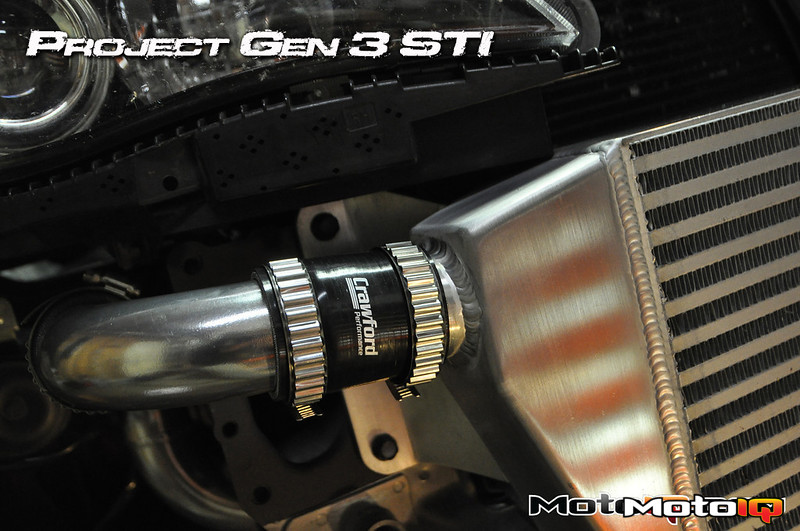,
We used a heat gun to prep the plastic sensor and soften the plastic and ran a utility knife around the perimeter. This easily cut in to the molded housing and with enough passes we could use a scraper to gently pry the sensor off the top of the housing. If you repeat this process yourself you will notice two terminal connections that need to be broken off to completely remove the sensor, not to worry, break away! The 5 wire sensor uses a ground, signal, and 12 V wire and the other two terminals supply voltage for the valve to open and the two connections that you break off are the valve signal conductors. Because the valve will no longer function anyway you can simply grind these off and cover them with the material of your choice. Liquid electrical tape or in our case 1″ heat shrink worked perfect. With this pesky housing gone we could now place the much smaller sensor lower in the engine bay, away from too much heat, and out of the way; MUCH better than keeping another useless part!
 After removal we cleaned up the sensor edges and heat shrunk over the connections just to be safe. We would later find this sensor a home by sliding it inside the GrimmSpeed master cylinder brace.
After removal we cleaned up the sensor edges and heat shrunk over the connections just to be safe. We would later find this sensor a home by sliding it inside the GrimmSpeed master cylinder brace. With those removed you still have two parts to go,The two tubes that connect to the heads are next and the driver side is cake to remove as you can reach it from your position above the intake manifold. The passenger side is another story all together and in order to save yourself a complete headache we found it best to remove the turbo up-pipe. The flange that mounts to the cylinder head for the air pump connection is largely shrouded by the up pipe heat shield and one of the bolts is nearly impossible to reach. While others have reported being able to do this with the up-pipe on the car I decided to keep my sanity and do it the long way. With the up pipe and down pipe off the car you can easily reach the air pump connection and once the two bolts are off you can then work on snaking the tube around the turbo and out the top of the engine bay.
Think we're done? FARK NO…. We now have two holes left on the cylinder heads to cover and while many companies offer billet aluminum block off plates we are FAR too cheap to by those. A little digging on the inter web revealed that a Subaru Tribeca shared the same heads but not an air pump and as such had two “block off plates” to cover these ports. We gave a call to our buddy Markos at Camelback Subaru and he confirmed them as “EGR” plates and we ordered them up along with the associated gaskets. All told we were out less than $25 for all of the parts including shipping. When we got them we realized they would work just fine. The passenger side bolts right in place and we chose to re-use the OEM gasket after cleaning it! The passenger side plate covered the hole perfectly however one of the bolt holes was slightly off, a problem cured by our die grinder and porting bit in about 30 seconds. Finally, with the plates bolted in place we called the air pump delete good!

 Here you can see the Composite TGV riser in comparison to the OEM tumble generation valves. It's clear that these replacements decrease restrictions within the intake tract and also help to reduce the amount of heat introduced to the intake charge by isolating the metal intake manifold from the cylinder head. You can also see how they provide more room around the TGV as the molded riser's are not required to maintain provisions for the butterfly valve motors.
Here you can see the Composite TGV riser in comparison to the OEM tumble generation valves. It's clear that these replacements decrease restrictions within the intake tract and also help to reduce the amount of heat introduced to the intake charge by isolating the metal intake manifold from the cylinder head. You can also see how they provide more room around the TGV as the molded riser's are not required to maintain provisions for the butterfly valve motors.  Here you can see the injector nozzles sitting within the Motive riser and the OEM rail. The two rail connections are for the supply from the tank and the other feeds the fuel rail on the passenger side of the car.
Here you can see the injector nozzles sitting within the Motive riser and the OEM rail. The two rail connections are for the supply from the tank and the other feeds the fuel rail on the passenger side of the car. 


